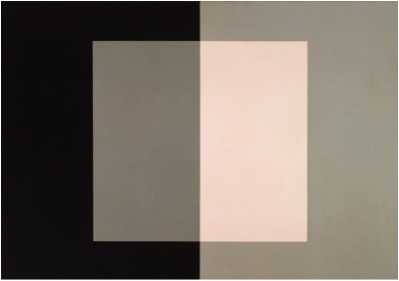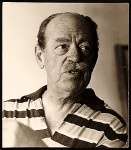
John McLaughlin
American, 1898-1976
Number 5, 1961
oil on canvas
42 1/4 x 60 1/8 in.
SBMA, Gift of Katherine Peake in memory of her mother, Alice F. Schott
1982.67

Undated photo of John McLaughlin
COMMENTS
John McLaughlin’s work fuses Zen painting, Constructivism, and hard-edged Minimalism in geometric compositions of lines, squares, and rectangles rendered in a palette of primary colors. Exploring harmonies of color, shape, and composition, McLaughlin sought to “communicate only to the extent that the painting will serve to induce or intensify the viewer’s natural desire for contemplation without the benefit of a guiding principle,” he said. His paintings can be understood as descending from the work of seminal abstractionists Kasimir Malevich and Piet Mondrian, pioneers in the exploration of the sublime potential of pure color and form. McLaughlin first studied painting in Japan while serving as an intelligence officer during World War II, and he later settled in California. His body of work served as inspiration for the artists of the California Light and Space Movement.
-Artsy
SBMA CURATORIAL LABELS
John McLaughlin sought pure abstraction in his art. He has said, “I want to communicate only to the extent that the painting will serve to induce or intensify the viewer’s natural desire for contemplation without benefit of a guiding principle.” McLaughlin’s first solo museum exhibition at the Pasadena Art Museum in 1956 featured asymmetrical, rectilinear paintings of unmodulated grays, yellows, pale blues, and blacks. Increasingly, McLaughlin’s work tended towards greater symmetry and simplicity, achieving a balanced state of substance and void.
Number 5 has a composition of overlapping rectangles that explore the variations of a single color. Its smooth surface and crisp, clean, contours demonstrate how West Coast art critic Jules Langsner coined the term “hard- edge painting.”
- Ridley-Tree Gallery, 2016
